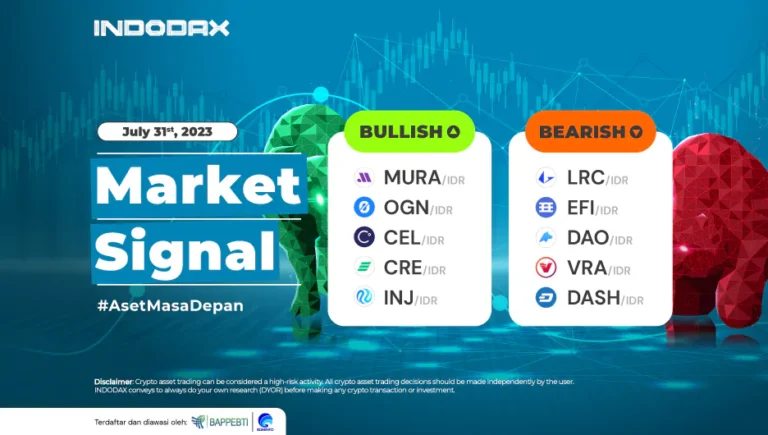In economics, there is one very important term to know, namely, hyperinflation.
Hyperinflation is an inflationary condition that will worry a country’s economic sector.
So, what exactly is meant by hyperinflation, and what are the impacts and how to deal with it?
To find out, see the full review of the article about hyperinflation below!
What is Hyperinflation?

The definition of hyperinflation is a condition where prices increase excessively at a fast time, and this situation is getting out of control.
This condition of hyperinflation illustrates a higher price increase than inflation in general.
Usually, the increase in the price of goods can be more than 50% per month.
The price of goods in the morning can change drastically to a higher value in the afternoon.
Hyperinflation itself is measured by exponential daily increases that can touch 5-10% in one day.
This is, of course, different from the usual condition of inflation, measured through monthly price increases.
As for the economy, the effect of hyperinflation is enormous and can lead to a lot of hoarding of goods. Even food stocks can also decrease.
In addition, hyperinflation will also have an impact on the banking sector.
In the banking sector, savings in banks will usually decrease in value.
Not that, even an investment can no longer be valuable when this hyperinflation occurs.
Difference between Inflation and Hyperinflation
Inflation and hyperinflation are, of course, two different things. However, what are the differences?
The difference can be seen from the definition of each. Inflation is a continuous increase in the price of goods and services within a certain period of time.
Meanwhile, hyperinflation is a condition of excessive inflation at intervals of around 50-100% of normal inflation.
Other differences can be seen from the time/period of measurement. In this case, inflation will be measured monthly, while hyperinflation will be measured daily.
Factors Causing Hyperinflation
The following are several factors that cause hyperinflation that needs to be known, including:
1. Money printing policy to overcome the budget deficit
The government in a country certainly requires large funds to carry out development.
Acquisition of this budget also comes from various sources, ranging from taxes, and money printing, to foreign debt.
In this case, if the government implements a policy of printing money, prices will rise, while the value of money will fall, and it is in that phase that hyperinflation will occur.
2. There was a war
Hyperinflation can also be caused by war. The reason is that a war that occurs in a country will certainly impact the economic condition of the country in question.
When a country is at war, economic and production factors cannot be utilized as they should boost economic growth.
The war also sucked up enormous funds, ranging from the supply of weapons to other related matters.
This, of course, will make the focus of the government in that country no longer lead to the economy in the country but will shift to focus on the ongoing war.
As a result, because productivity has fallen, national income has also decreased.
3. Poor socio-political conditions
Apart from the two factors above, hyperinflation can also occur in a country due to poor socio-political conditions.
The reason is that the conflicts that occur in the country in these countries will impact their economic stability.
If chaos occurs, in general, various public facilities will be damaged.
When these conditions and situations continue, the country’s economic growth rate will certainly stagnate due to the production process not being optimal.
If the level of production decreases, national income will also fall.
Impact of Hyperinflation on the Economy

So, what are the actual effects of hyperinflation on a country’s economy?
When hyperinflation occurs, the increase in prices that goes hand in hand with rising wages for workers, as is the case under normal economic conditions, will not materialize.
When prices increase excessively quickly and uncontrollably, the value of cash and savings in the bank will decrease.
Even cash may no longer have value due to diminishing purchasing power.
As a result, the socioeconomic conditions of the people also became uncontrollable.
Among other things that might happen is looting shops/markets because people increasingly have difficulty meeting their primary needs.
In the financial sector, hyperinflation can be a factor in bankruptcy because people can’t afford it again saving.
In addition, state revenue sources from taxes will decline because taxpayers can no longer pay their tax obligations.
As a result of this, the state is no longer able to meet the basic needs of its citizens.
Hyperinflation in Indonesia
Has hyperinflation ever occurred in Indonesia? The answer: ever.
Hyperinflation in Indonesia occurred in the early 1960s when the budget deficit was getting unstoppable, and the policy taken by the government at that time was to print money.
However, Indonesia’s economic condition has worsened since the policy was implemented.
Hyperinflation is also present with marked rapid inflation that reaches 100%, even more.
This situation is exacerbated by the decline in public confidence when holding money.
In this case, people immediately spend their money because they fear the value will continue to fall.
At its peak, hyperinflation with a value of more than 600% eroded people’s purchasing power and sucked up a large amount of the state budget.
Infrastructure is also worsening because there needs to be an improvement, as with transportation/land transportation modes.
Not only that, but the impact of Indonesia’s hyperinflation in the early 1960s also resulted in a decline in production capacity to its lowest point.
Meanwhile, industrial production is only 20% of its capacity.
What’s worse, Indonesia can also not export to earn foreign exchange.
As is known, without foreign exchange, imports cannot occur. On the other hand, the national debt has swelled and is no longer being paid off, reducing other countries’ trust in Indonesia.
At that time, the government overcame hyperinflation through a national loan.
At the same time, the government issued Oeang Republik Indonesia (ORI) and formed a Banking and Trading Company.
However, the deplorable economic conditions ended with the resignation of President Soekarno.
Hyperinflation in Other Countries
Zimbabwe is one of the countries that have become the world’s spotlight due to hyperinflation.
Happening in 2007, hyperinflation in Zimbabwe was caused by the birth of a land redistribution policy, resulting in a transfer of land ownership status.
If originally the land was controlled by white farmers (Europeans), then with the redistribution policy, land ownership would pass into the hands of local farmers.
However, due to the relatively low level of knowledge and experience of local farmers, the lands are unable to produce/produce as before.
As a result, agricultural production also fell drastically and this caused a decrease in food supplies.
This then made food prices in Zimbabwe increase.
Hyperinflation in Zimbabwe also occurred because this country was in conflict with the Congo state.
At its peak, food becomes scarce and the supply of fuel for production and consumption decreases.
In addition, the local government still needs to fulfill health facilities for the community.
This hyperinflation continued in Zimbabwe until 2008 and touched its highest value at 79,000,000,000%.
However, in the end, Zimbabwe managed to emerge from its dark economic period.
In this case, the country implements a multi-currency policy or the use of foreign currency as a means of payment and domestic transactions.
How to Overcome Hyperinflation
To deal with hyperinflation, the best way the government can take is to reduce the state budget.
In addition, the government can also provide a stimulus for small and medium enterprises or MSMEs to be able to increase production by adjusting the minimum wage.
With these steps, the State Revenue and Expenditure Budget (APBN) will also become strong, especially in collecting large and sustainable revenues.
Later, the proceeds will be used as a buffer fund for the poor when hyperinflation occurs.
In addition, to increase production output and minimize the impact of hyperinflation, MSMEs must also produce goods using domestic (local) raw materials.
Then, MSMEs also need to improve the quality of their products so as to reduce import activities.
This will help the government to control imports, especially in the food and energy sectors.
The use of local/domestic products will usually increase with this implementation.
In addition, the government must also strengthen local food and energy defenses by utilizing land resources effectively.
A collapse in the value of a currency will result in a country’s economic instability.
In dealing with hyperinflation, public participation can be done by preparing/making appropriate household spending arrangements with what is needed.
As for this, the public is also not allowed to hoard products, especially staples.
Conclusion
Hyperinflation is a condition where prices increase excessively quickly, which is getting out of control.
This condition of hyperinflation illustrates a higher price increase than inflation in general.
Usually, the amount of increase in the price of goods can even be more than 50% per month.
The price of goods in the morning can change drastically to a higher value in the afternoon.
Hyperinflation is measured by exponential daily increases that can touch 5-10% in one day.
It needs to be understood again that hyperinflation is a damaging economic phenomenon and can trigger a widespread economic crisis.
Therefore, it is important for countries to implement appropriate policies and strategies to prevent hyperinflation.
In the investment sector, including crypto assets, hyperinflation will usually trigger massive investments and purchases of crypto assets by investors.
This happened because crypto assets were seen as more attractive to some investors during hyperinflation.
Do You Want to Invest in Crypto?
To deal with hyperinflation, everyone must have an emergency fund.
The function of an emergency fund can be felt when dealing with economic uncertainty.
As a way to increase the amount of an emergency fund, one of the things that can be done is to invest.
The reason is the investment allows someone to gain profits that can later be allocated to an emergency fund.
One type of investment that can be made is investing in crypto assets.
For those of you who are interested in investing in crypto assets immediately, you can download the latest version of the INDODAX application right now.
Many features available in the latest INDODAX application today can help investors using iOS and Android in investing.
Furthermore, you can enter the INDODAX market directly and make buying and selling crypto assets easy and simple.
Besides that, if you want to learn more about crypto assets, you can learn it at INDODAX Academy.








